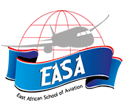About Air Traffic Controllers
Air traffic controllers help guide planes both in the sky and on the ground. They use technology that allows them to see all air traffic in a given area, and it is their responsibility to coordinate that traffic to ensure each flight takes off, lands, or passes through safely. Air traffic controllers communicate with pilots, telling them when to take off and land, and alerting them to issues with the weather, other aircraft flying around them and important information on the ground at the airport.
Air Traffic Control has different levels of responsibilities.
Aerodrome Control (Tower): Aerodrome controllers are in charge of controlling movements on and off runways, handling ground movement of planes and vehicles around the terminals.
Approach Control: Approach Controllers have the responsibility of maintaining the required separation between aircraft that are departing and arriving. They cannot see the aircraft in the air but they follow them on their radar displays. They take over the responsibility of the aircraft from Tower controllers after aircraft pass a certain altitude after departure and hand over arriving aircraft to tower at a certain altitude when the tower controller is able to see the aircraft.
Area Control (enroute control): Area controllers are responsible for the safety of aircraft at higher altitudes, in the enroute phase of their flights. Generally the area under their jurisdiction is determined by international boundaries.
Air Traffic control service is provided at the following airports;
- Jomo Kenyatta International Airport (H24)
- Wilson Airport (0330-1730Z)
- Moi International Airport (H24)
- Kisumu International Airport (0330-1800Z)
- Eldoret International Airport (0330-1800Z)
- Wajir Airport (0330Z-1530Z)
- Malindi International Airport (0330-1730Z))
- Diani Airport (0330-1530Z)
- Lokichoggio Airport (0330-1530Z)







